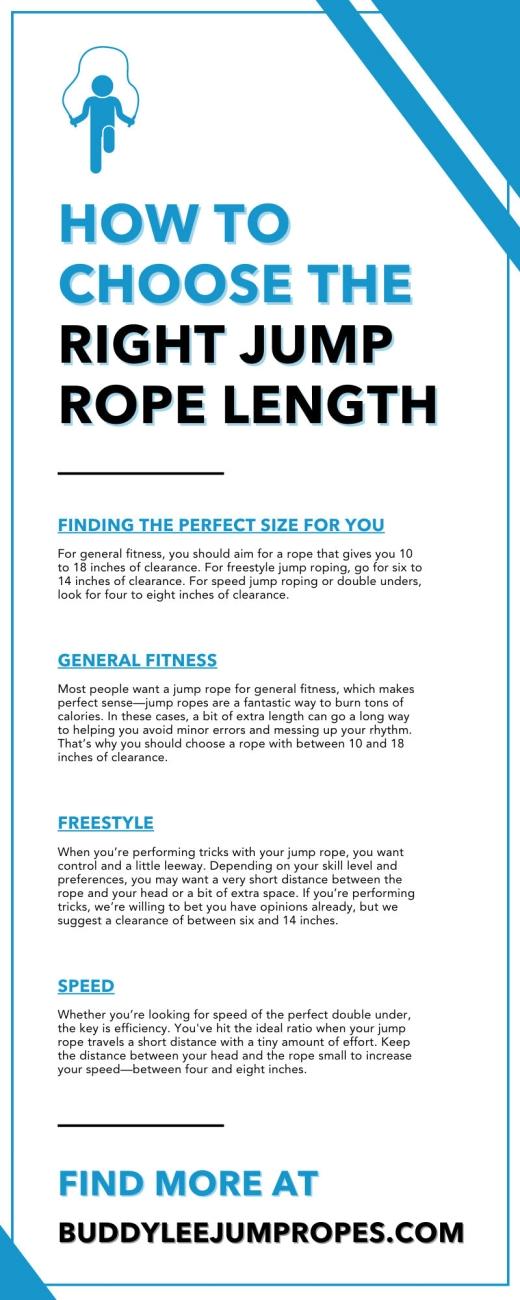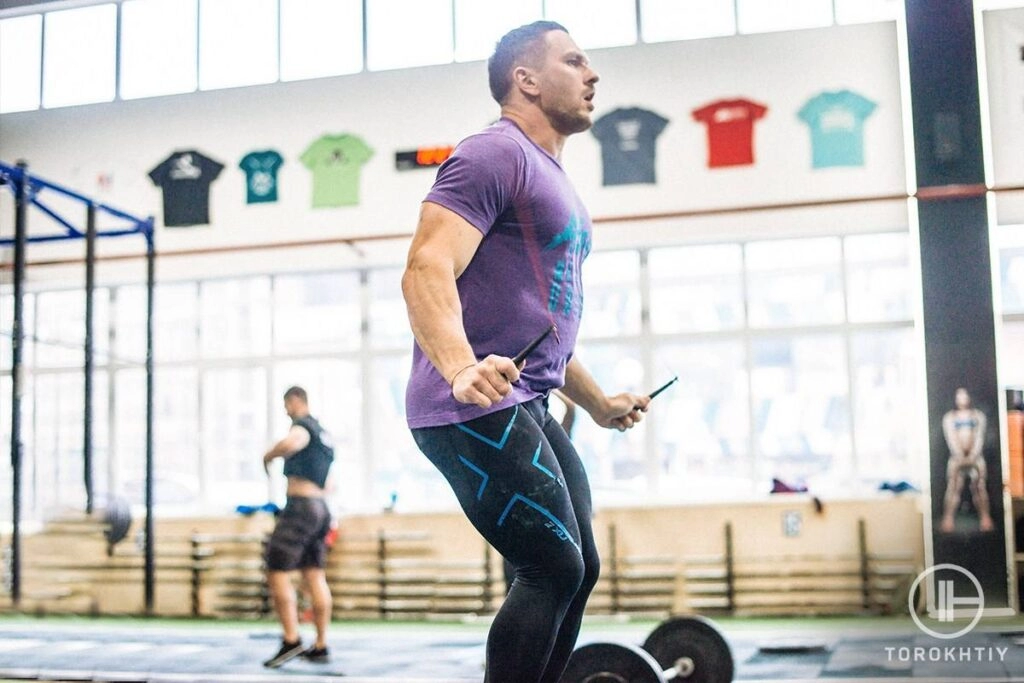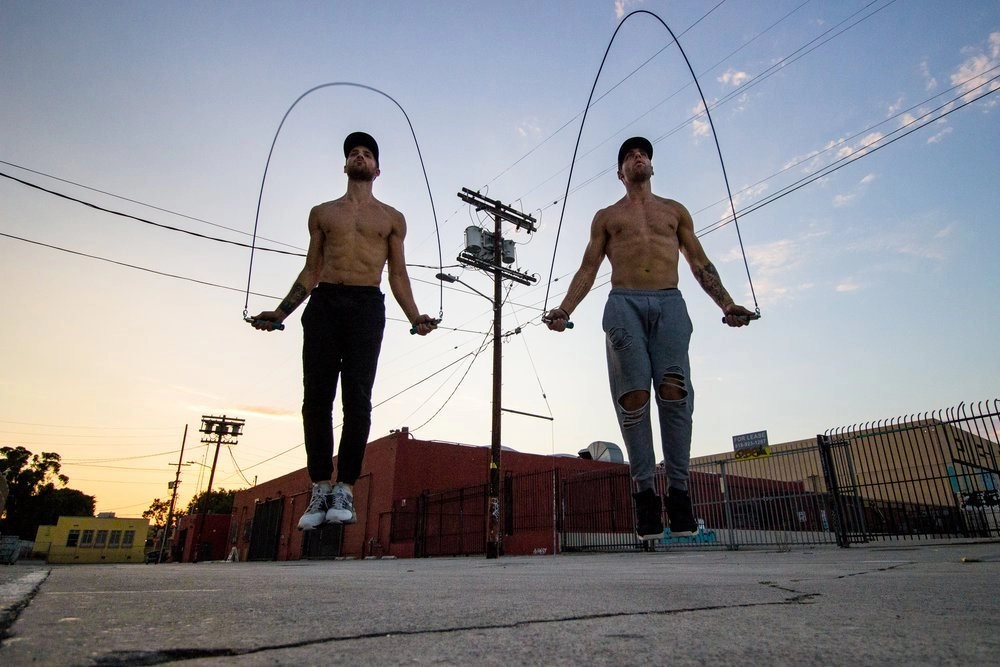The Right Jump Rope Length can Improve Efficiency and Prevent Injuries
When the rope length matches your height and jump style, it boosts jumping efficiency and speed, allowing for smoother, faster rotation. A rope that’s too long or too short can slow your rhythm, cause tripping, and disrupt your flow, impacting both performance and motivation.
Impact on Jumping Efficiency and Speed
- The correct rope length ensures you maintain a consistent jump cadence and rhythm.
- It allows for optimal clearance during each jump, helping you avoid catching the rope on your feet.
- A well-sized rope supports advanced techniques such as double unders and faster freestyle moves.
- Proper length reduces unnecessary arm movement, saving energy and improving endurance.
Injury Prevention and Comfort
- Using a rope that’s too long forces wider swings causing you to trip, increasing the risk of ankle twists and knee strain.
- A rope that’s too short can lead to awkward wrist angles and inefficient jumps, increasing joint stress.
- Proper length encourages safe form and pacing, limiting strain on your wrists, elbows, and shoulders.
- Comfortable rope length helps avoid fatigue and discomfort, essential for longer training sessions.
Differences Between Beginner and Professional Needs
- Beginners benefit from a slightly longer rope to allow more time for each jump—reducing missed swings and frustration.
- Professionals require a tighter, shorter rope length for faster speed and precision, supporting advanced jump rope training tips like double unders and crossovers.
- Skill level impacts rope choice significantly; the perfect length grows and changes as you improve.
- Understanding these differences helps in choosing the best jump rope size for height and ability.
choosing the right jump rope length is not just about convenience—it directly affects your jumping efficiency, comfort, and injury prevention. Whether you’re just starting out or training like a pro, adjusting the rope length to your needs is the foundation of productive jump rope workouts.
How to Measure the Perfect Jump Rope Length for Your Height
Choosing the right jump rope length is key to smooth jumping and avoiding tripping. Here’s a straightforward step-by-step guide to measure the perfect jump rope length, tailored for your height and jumping style.
Step-by-Step Guide by User Height
- Stand on the middle of the rope with one foot.
- Pull the handles straight up alongside your body.
- For beginners, the rope handles should reach around your armpits — this gives enough clearance for easy jumps.
- For more experienced jumpers, especially those doing faster jumps or double unders, the handles can be closer to your shoulders or collarbone for quicker rotations.
Foot to Armpit and Floor to Shoulder Measurement Methods
- Foot to Armpit Method: This is the classic way and works well for most users. It balances rope length for comfort and efficiency.
- Floor to Shoulder Method: Preferred by advanced jumpers for speed and precision. This shorter rope length helps with fast rotations but requires some skill.
Tips for Testing Rope Length at Home
- Make sure you have clear space to swing the rope safely.
- Try jumping for at least a minute to see if you trip or feel the rope is too long or short.
- If the rope touches the floor heavily or drags, it’s probably too long.
- If the handles feel too close and cause you to trip, try lengthening it a bit.
Visual Jump Rope Length Chart for Quick Reference
| Height (inches) | Beginner Rope Length (feet) | Advanced Rope Length (feet) |
|---|---|---|
| 48 – 54 | 7 | 6 |
| 55 – 60 | 8 | 7 |
| 61 – 66 | 9 | 8 |
| 67 – 72 | 10 | 9 |
| 73+ | 11 | 10 |
Use this jump rope length chart as a starting point, then fine-tune based on your style and comfort.
Measuring your rope length the right way sets you up for better jumping efficiency and reduces the risk of tripping, making your workouts more effective and enjoyable.
Factors Affecting Jump Rope Length Selection
Choosing the right jump rope length isn’t just about your height. Several factors come into play that impact your comfort, efficiency, and overall performance. Here’s a closer look at what you should consider when picking or adjusting your rope.
User Skill Level
Your skill level plays a big role in deciding the best jump rope length for you:
- Beginners usually benefit from a longer rope. This extra length gives more clearance to avoid tripping and helps build rhythm.
- Intermediate jumpers often move towards a slightly shorter rope to enable quicker rotations.
- Advanced users and pros prefer even shorter ropes for speed work and tricks like double unders or crossovers.
So, your chosen rope length should align with your current skill and the progress you aim to achieve.
Style of Jumping
Different jumping styles demand different rope lengths:
- Speed jumping or double unders require a shorter, faster-spinning rope. You want minimal slack to increase rotation speed.
- Freestyle jumping and crossovers might need a little extra length for more control and room to maneuver.
- If you’re training for specific skills, adjusting the rope length to suit that style is crucial.
Rope Material Characteristics with Focus on PVC Jump Ropes by PVCJumpRope.com
At PVCJumpRope.com, we specialize in PVC jump ropes, known for their versatility and performance. Material matters when choosing length because:
- PVC ropes are lightweight but sturdy, making them ideal for speed and freestyle.
- Their flexibility means a properly sized PVC rope will feel smooth and responsive.
- Different materials react to adjustment differently—PVC ropes from PVCJumpRope.com offer consistent performance whether you cut or adjust length.
Rope Thickness and Weight
The thickness and weight of the rope also influence what length works best:
- Thinner ropes spin faster, favored by speed jumpers, and often require precise length adjustments.
- Heavier or thicker ropes offer more resistance, better for strength work but may need a slightly longer length to compensate for slower rotation.
- PVC ropes by PVCJumpRope.com come in various thicknesses—choosing the right one depends on your goals and skill.
of Key Points
- Skill level: Start longer, shorten as you improve.
- Jumping style: Match length to speed, freestyle, or tricks.
- PVC rope properties: Lightweight, flexible, great for fast and controlled jumping.
- Thickness and weight: Thinner = faster spin; thicker = more resistance.
Understanding these factors helps you pick the perfect jump rope length tailored to your style and skill, making your training more effective and enjoyable.
How to Adjust Your Jump Rope Length for the Perfect Fit
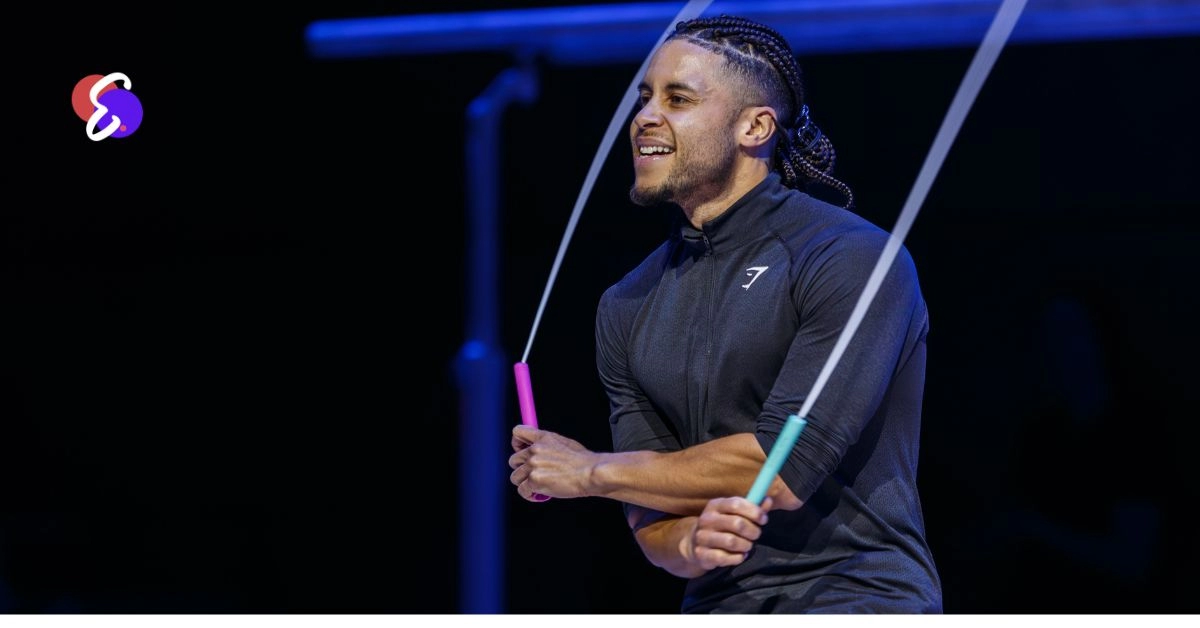
Adjusting your jump rope length properly is key for comfort and performance, especially with PVC ropes like the ones from PVCJumpRope.com. A rope that’s too long or too short can throw off your rhythm, slow you down, and even increase injury risk. Here’s a clear guide to getting your jump rope just right.
Step-by-Step Guide to Adjusting PVC Jump Rope Length
- Measure and Mark the Correct Length
- Start by standing on the middle of the rope with one foot.
- Pull the handles up along your sides. For most adults, the handles should reach about your armpits.
- Mark the excess rope length near the handle where it won’t affect the rotation.
- Cutting the Rope (if needed)
- Use sharp scissors or a utility knife to cut the rope carefully at the marked point.
- Always cut a little longer than you think you need; you can trim more later if needed.
- Adjust Knotting or Hardware
- For ropes with adjustable hardware (like clamps or screws), loosen them to slide the rope to your desired length.
- Tighten securely once you’ve adjusted.
- For non-adjustable ropes, tie a strong knot near the handle end to shorten the length.
Tools Needed for Adjusting Your Jump Rope
- Measuring tape or ruler
- Sharp scissors or utility knife
- Screwdriver or Allen wrench (for hardware adjustments)
- Marker or tape to mark length
- Optional: Lighter or heat source to seal PVC ends after cutting
Importance of Fine Tuning for Jump Rope Comfort and Performance
- Small adjustments matter. Even an inch too long or short can disrupt your jump timing.
- Customize for your style. Speed jumpers might prefer a slightly shorter rope for quicker rotations, while freestyle jumpers might want a bit more length.
- Check your rope after a few sessions. Jumping causes slight stretching or loosening, so re-tighten or re-adjust as needed.
If you’re looking for an adjustable PVC jump rope that makes this process easier, check out our adjustable PVC jump rope options — they let you fine-tune length with minimal hassle.
Fine tuning your jump rope length pays off with better efficiency, fewer mistakes, and a smoother experience every time you jump.
Common Mistakes in Choosing Jump Rope Length and How to Avoid Them
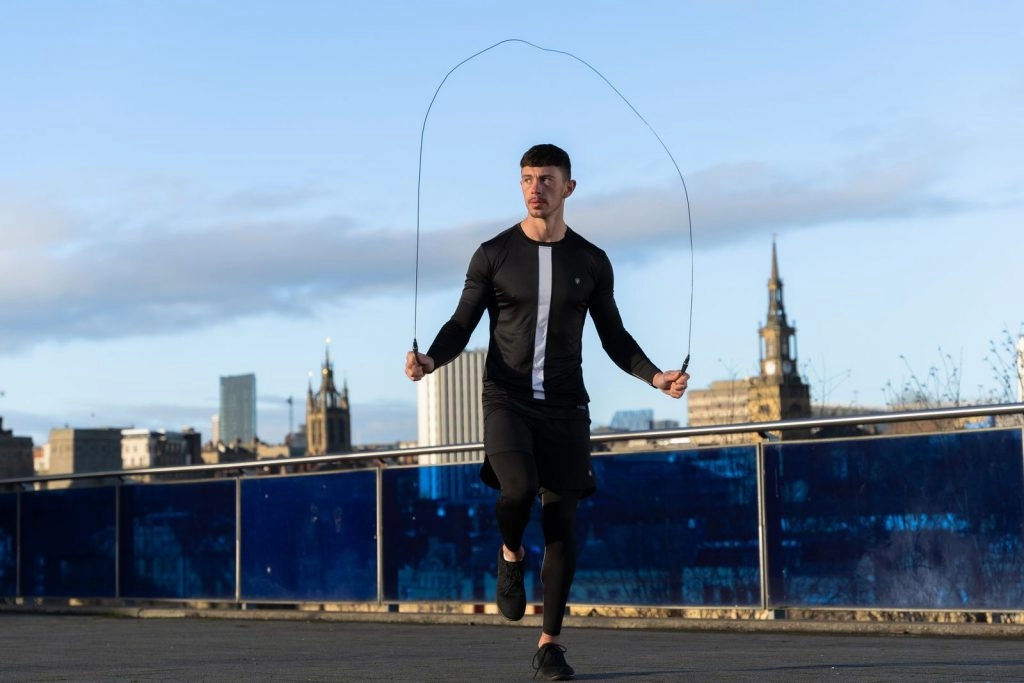
Selecting the right jump rope length can make a huge difference in your workout. Yet, many people fall into basic traps that hurt their efficiency and enjoyment. Here are some common mistakes and how you can avoid them.
Buying Ropes That Are Too Long or Too Short
One of the biggest errors is purchasing a rope that’s not suited to your height or jump style. A rope that’s too long will drag on the floor, slowing your speed and increasing the chance of tripping. On the other hand, a rope that’s too short forces you to jump higher than needed, leading to wasted energy and possible injury.
How to avoid:
- Always measure your ideal rope length before buying using a jump rope length chart or the simple height-based methods.
- Opt for adjustable jump ropes like PVCJumpRope.com’s PVC ropes, which let you fine-tune length as you improve or switch styles.
Not Adjusting the Rope Before First Use
Even if you pick the right size initially, not customizing your rope to your comfort level is a missed step. Many jumpers skip the adjustment process—cutting the rope or tightening hardware—which impacts performance.
How to avoid:
- Take the time to trim or adjust your rope immediately after purchase.
- Use the recommended tools to customize length for smooth rotations and bounce.
- Test your rope length during the first few sessions and tweak it as needed.
Ignoring Personal Jumping Style and Goals
Another mistake is buying a one-size-fits-all rope without considering your style or training goals. Different jump styles like double unders, freestyle, or speed jumping demand variations in rope length and weight.
How to avoid:
- Identify your main jump style before selecting or adjusting your rope.
- For example, those focusing on double unders usually prefer a slightly shorter rope for faster rotation.
- Beginners benefit from a longer rope that’s easier to control, increasing confidence and comfort.
By avoiding these mistakes, you’ll get more from your jump rope workouts with less frustration. For U.S. customers, investing time in choosing and adjusting the right rope length improves both safety and efficiency—helping you reach your fitness goals faster.
Why Choose PVCJumpRope.com for Your Jump Rope Needs
When it comes to picking the right jump rope, quality and customization matter a lot. That’s where PVCJumpRope.com stands out, especially for customers in the United States who want a reliable, long-lasting rope built for performance.
Superior PVC Jump Rope Quality and Durability
PVCJumpRope.com specializes in PVC jump ropes, known for their durability and smooth swing. These ropes resist wear and tear better than many others, making them perfect for daily use whether you’re training at home or in a gym. The materials PVCJumpRope.com uses ensure your rope stays tangle-free and performs well across all jump styles, including double unders and freestyle.
Customizable Lengths and Easy Adjustability
Everyone’s height, skill level, and jumping style are different—that’s why PVCJumpRope.com offers adjustable jump rope lengths tailored to fit your needs. Whether you’re a beginner needing more length for comfort or a pro trimming down for speed, PVCJumpRope.com ropes are easy to adjust using simple tools or hardware. This makes the process smooth and hassle-free, so you don’t waste time guessing or cutting ropes incorrectly.
Trusted by Users and Experts
The feedback from PVCJumpRope.com customers consistently highlights how the right jump rope size improves training efficiency and comfort. Expert trainers also recommend PVCJumpRope.com ropes because of the consistent performance and quality craftsmanship. Many users mention how tuning the rope length helped them avoid injuries and improve their jump rope workout outcomes.
Choose PVCJumpRope.com if you want a jump rope that combines high-quality PVC material, customizable sizing, and trusted durability. It’s the smart choice for anyone serious about improving their jump rope training safely and effectively.

